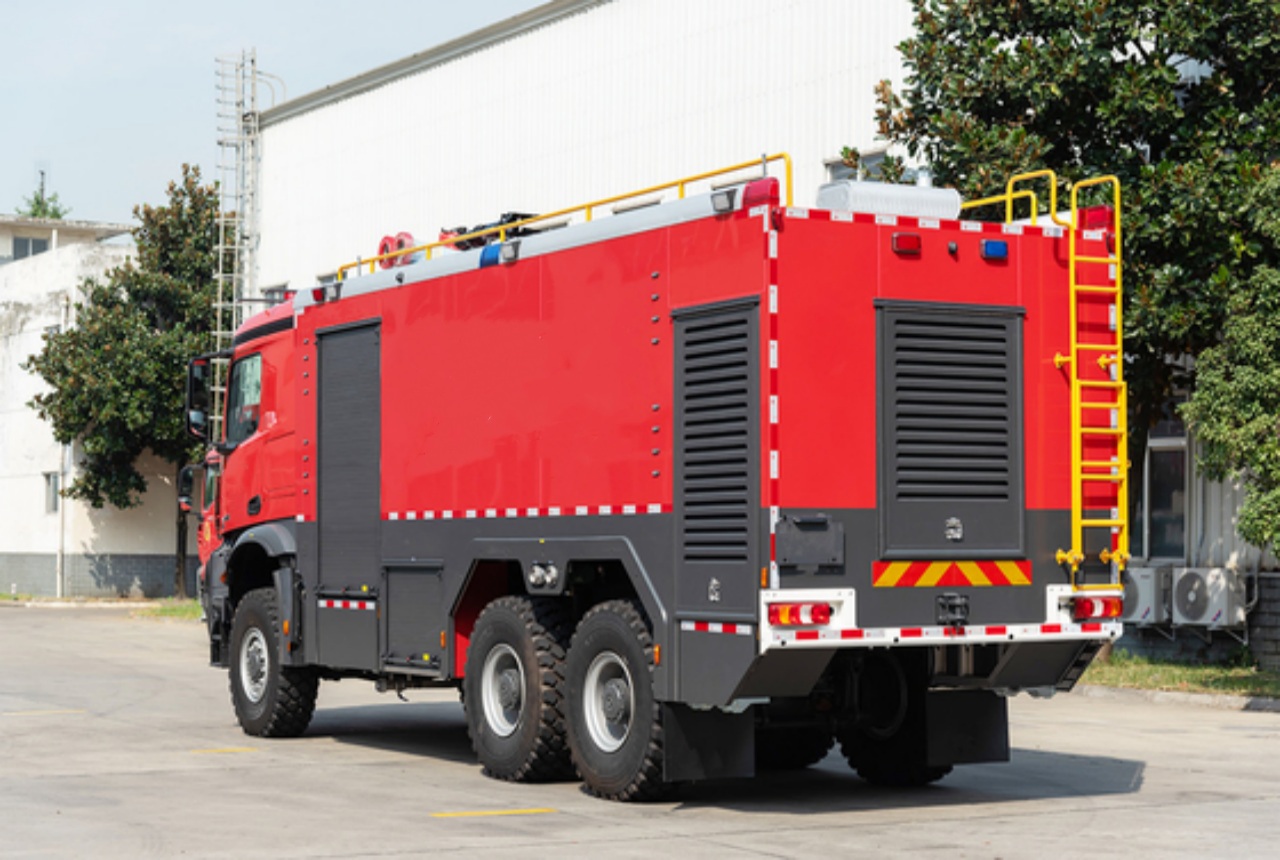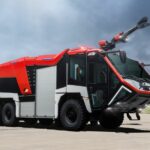Airports are bustling hubs of activity, with aircraft constantly taking off, landing, refueling, and being serviced. Safety is a top priority with so many moving parts and potential hazards. One of the most critical components of airport emergency response systems is the airport crash tender, an airport fire truck or aircraft rescue and firefighting (ARFF) vehicle. These specialized vehicles are designed to respond rapidly to aircraft emergencies, particularly during crashes, fires, or fuel-related incidents.
Definition and Purpose
An airport crash tender is a highly specialized firefighting vehicle specifically designed to respond to aircraft emergencies at or near airports. These vehicles are equipped with high-capacity water tanks, foam agents, dry chemicals, and a range of tools and technologies to quickly suppress fires, rescue passengers and crew, and prevent explosions or further damage.
Unlike municipal fire trucks that are built to handle structural fires and urban scenarios, airport crash tenders are purpose-built for aviation environments, where fires can escalate rapidly due to jet fuel, complex aircraft structures, and confined spaces.
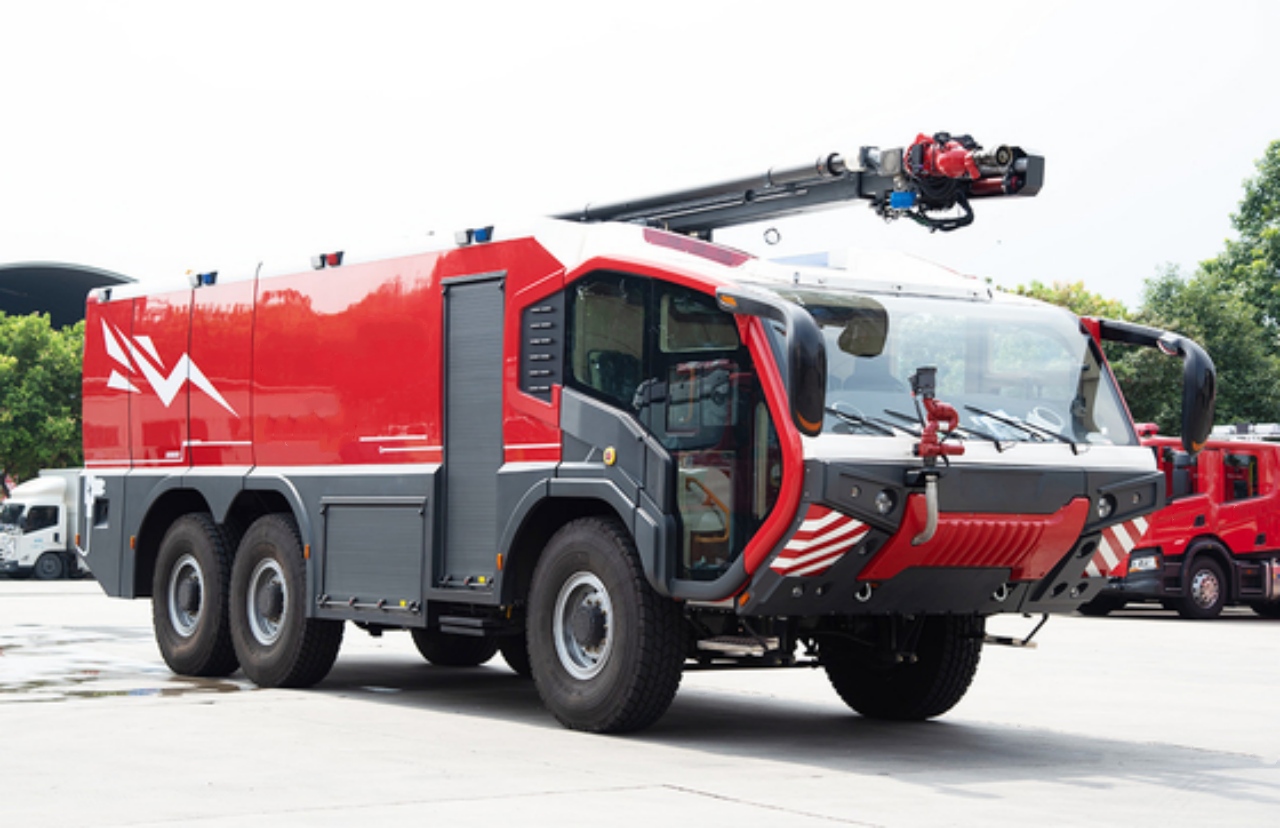
Key Features of an Airport Crash Tender
Airport crash tenders differ from regular fire engines in several ways. Here are some of their distinguishing features:
1. High-Speed Response Capability
Time is critical in an aviation emergency. Airport crash tenders are designed to reach the site of an incident as quickly as possible. Many models can accelerate from 0 to 80 km/h (50 mph) in under 25 seconds, with top speeds exceeding 110 km/h (68 mph). This rapid deployment capability is essential for meeting the International Civil Aviation Organization (ICAO) and Federal Aviation Administration (FAA) response time requirements.
2. Off-Road Mobility
Runway accidents often occur on grass, dirt, or uneven terrain adjacent to runways or taxiways. To deal with these conditions, crash tenders are typically fitted with all-wheel-drive (AWD) systems, large tires, and heavy-duty suspension systems, allowing them to navigate off-road terrain with ease.
3. Fire Suppression Systems
Airport crash tenders carry a mix of fire suppression agents to tackle different types of fires:
- Water: Used primarily for cooling and extinguishing fires.
- Aqueous Film Forming Foam (AFFF): A foam that quickly blankets fuel fires, cutting off oxygen and preventing re-ignition.
- Dry Chemicals: Like potassium bicarbonate (Purple-K), effective against Class B flammable liquid fires.
- Halotron or other clean agents: Used in some systems for non-damaging extinguishment, especially near sensitive electronics.
Most tenders feature roof- and bumper-mounted turrets (water cannons) that can deliver thousands of liters per minute. Some have penetrating nozzles designed to pierce aircraft fuselages and inject foam directly into cabins or cargo holds.
4. Large Agent Capacities
Given the scale of potential fuel fires involving commercial jets, airport crash tenders are equipped with large tanks:
- Water tanks can range from 6,000 to 12,000 liters (1,600 to 3,200 gallons).
- Foam tanks usually range from 500 to 1,500 liters.
- Dry chemical and clean agent systems are also integrated for specialized firefighting.
5. Rescue and Extrication Equipment
In addition to firefighting, airport crash tenders are equipped with tools to assist in passenger rescue:
- Hydraulic cutters and spreaders (e.g., Jaws of Life)
- Ladders for accessing elevated fuselages
- Lighting systems for night operations
- Breathing apparatus for firefighters
- Thermal imaging cameras to detect people or hot spots
6. Crew Cab and Safety Features
Airport crash tenders typically carry a crew of 2 to 4 firefighters. The cabs are built for quick deployment and high visibility, often with panoramic windows, reinforced structures, and ergonomic controls. Many modern tenders feature climate control, integrated communication systems, and advanced navigation equipment to coordinate with control towers and emergency services.
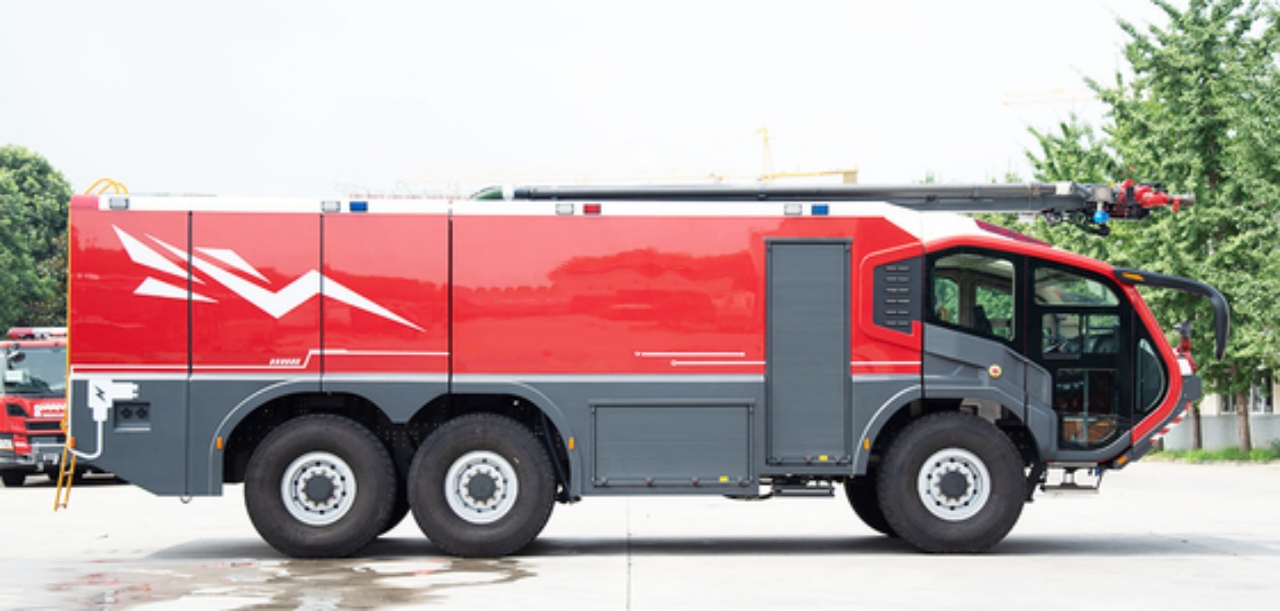
Types of Airport Crash Tenders
There are various types of airport crash tenders, each suited for different airport sizes and response needs:
- Major Foam Tender (MFT): Large, high-capacity vehicles with significant fire suppression capability, typically used at large international airports.
- Rapid Intervention Vehicle (RIV): Smaller, faster units are used to provide an immediate response while larger tenders follow.
- Combined Agents Vehicle (CAV): Equipped with both foam and dry chemical agents for versatile firefighting.
- Emergency Medical Rescue Vehicles (EMRV): Focus on medical evacuation and treatment of injured passengers or crew.
Training and Regulations
Operating an airport crash tender requires specialized training. Firefighters must be trained in aircraft-specific firefighting tactics, hazardous materials response, and high-speed driving techniques. Agencies like the ICAO and FAA have stringent guidelines that govern:
- Vehicle specifications and performance
- Minimum staffing levels
- Response times (usually within 3 minutes to any point on the runway)
- Regular drills and certification
Airport firefighters often undergo live-fire training using mock fuselages and simulated fuel fires to prepare for real-world scenarios.
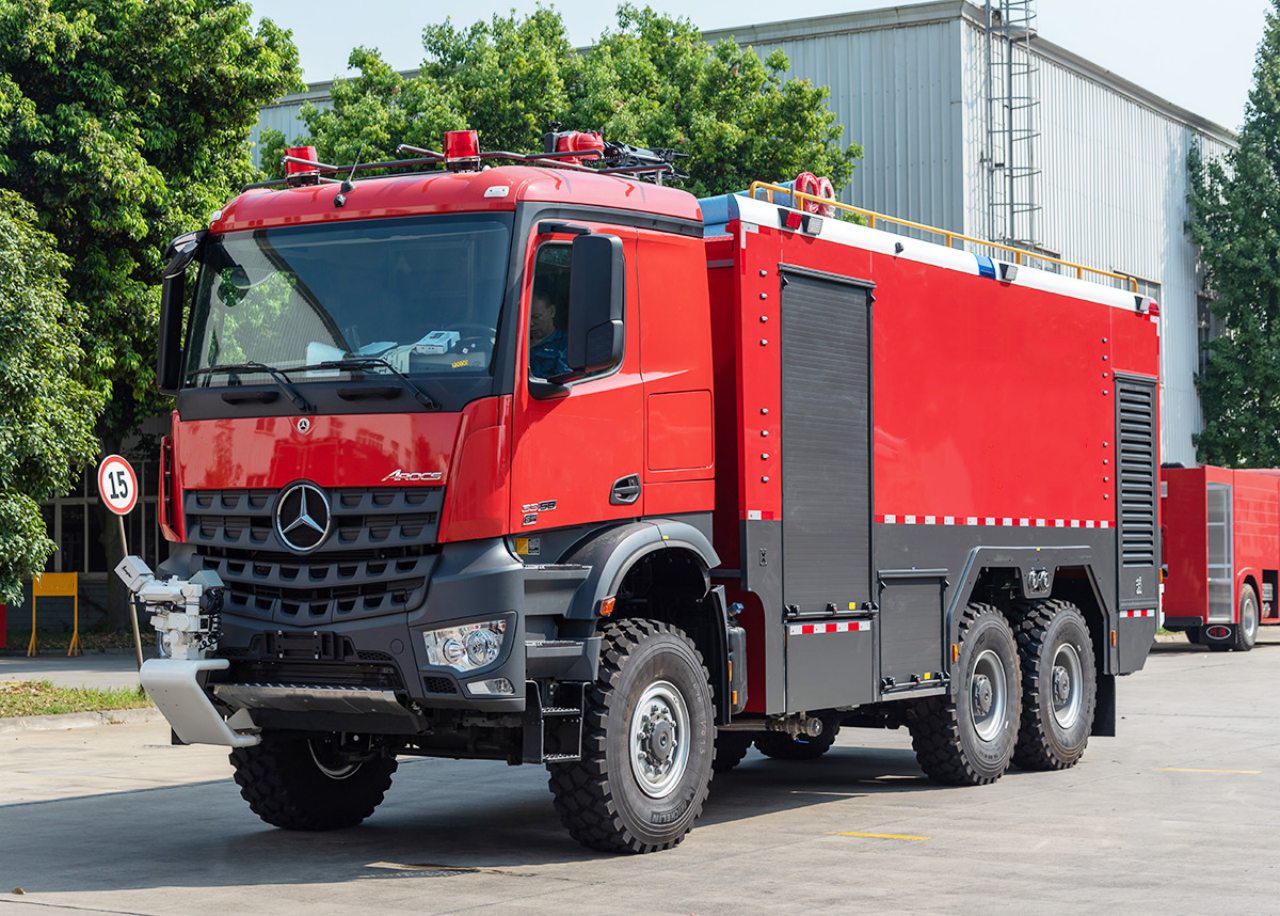
Real-World Examples
Several manufacturers around the world produce airport crash tenders. Some well-known models include:
- Rosenbauer Panther (Austria): Known for its sleek design, powerful performance, and advanced firefighting systems.
- Oshkosh Striker (USA): Widely used in North America and the Middle East, known for ruggedness and modular systems.
- Tital Firefighting Vehicle by NAFFCO (UAE): Popular in the Middle East and Asia.
- Simon Snorkel and Carmichael Cobra (UK): Older models are still in service in many regions.
These vehicles are deployed at civilian and military airports globally, ensuring a rapid, effective response in emergencies.
The Role in Saving Lives
When a crash or incident occurs at an airport, every second matters. Airport crash tenders are the first line of defense in minimizing damage, controlling fires, and saving lives. Their ability to respond within moments, apply massive volumes of foam and water, and assist in rescue operations can make the difference between survival and tragedy.
Even in cases where there is no fire, crash tenders provide essential safety oversight during emergency landings, fuel leaks, or engine malfunctions. Their presence gives pilots, passengers, and ground personnel peace of mind that help is ready when needed most.
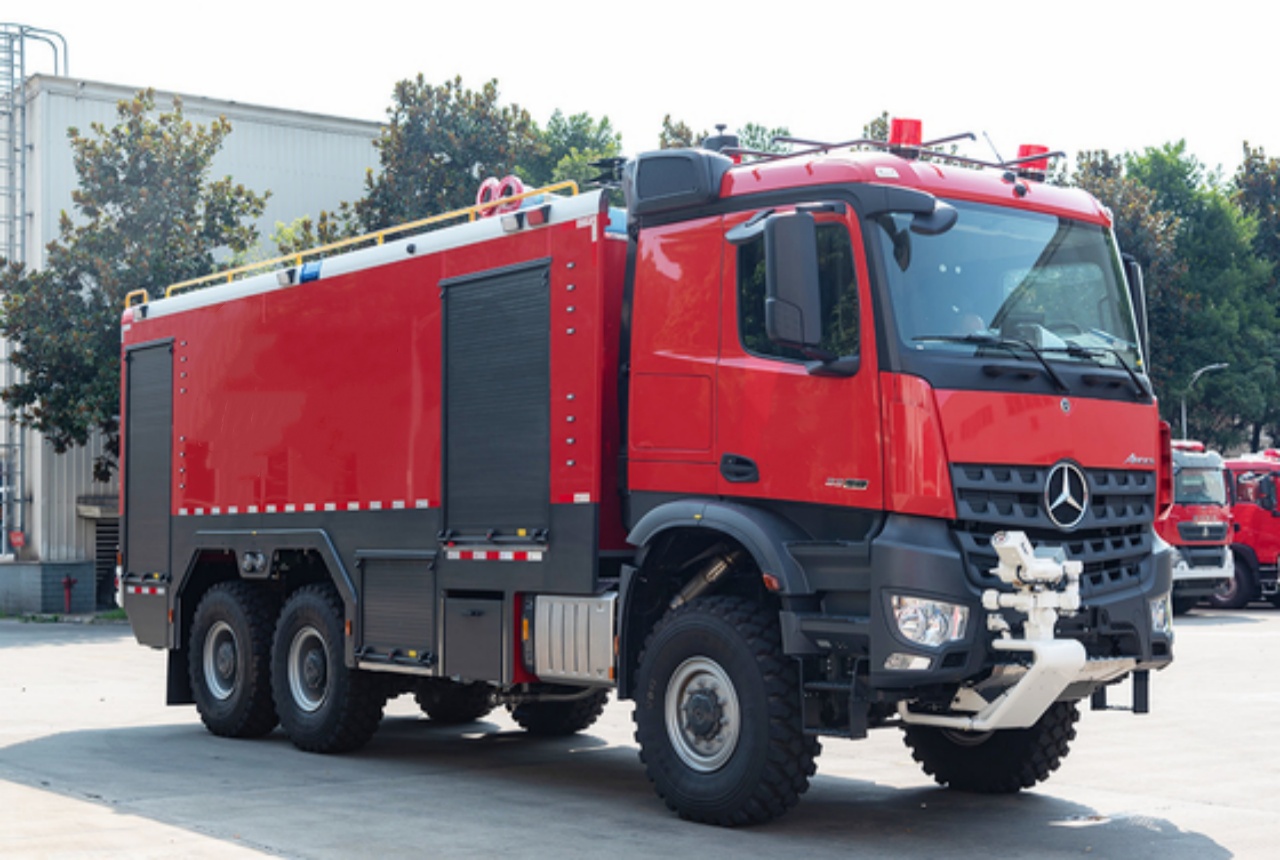
Conclusion
An airport crash tender is far more than just a fire truck—it’s a high-performance, purpose-built emergency response vehicle that plays a vital role in aviation safety. Equipped with specialized equipment, massive firefighting capabilities, and trained crews, these vehicles ensure that airports are prepared for the worst while striving to deliver the best in emergency response.
As aviation technology advances, airport crash tenders will continue to evolve, integrating smarter systems, eco-friendly firefighting agents, and even autonomous features. But their core mission remains unchanged: to protect lives and property in the high-stakes world of aviation emergencies.
